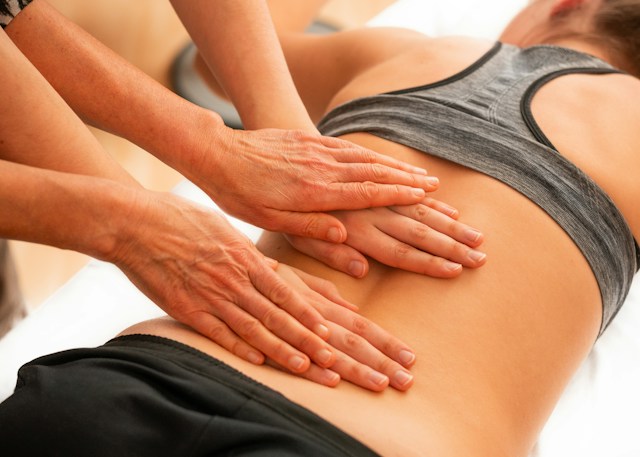The lumbago, It is very at all times preferable to match a number of websites before choose the one that fits the mostúcommonly known as low back pain, it is a conditionón mésays it affects the lower back, specíphysically in the regionón lumbar. It is one of the leading causes of disability worldwide and can affect people of all ages., although it is más común in older adults. This pain can range from mild to disabling and can be sharp or crippling.ónico. The exact cause of low back pain can be difficult.íeasy to determine, since it can be related to a variety of factors, including injuries, muscle problems, degenerationón of vertebral discs, bad posture, overweight, strés o tensionón muscular, among others.
Index
Causes and Risk Factors of Lumbago
Lumbago can present in waysúbitta laterés of lifting a heavy object, make a sudden movement, or it may develop gradually over time due to poor posture or lack of exercise. Además of pain in the regionón lumbar, the síSymptoms may include muscle stiffness, difficulty moving, muscle spasms and, in cases más graves, radiate to usón of pain towards the legs, known as ciática.
Pharmacol Treatmentsólogics and alternatives
Treatment of low back pain generally includes a combinationón of measures to relieve pain, improve functionón and prevent future relapsesíthe. Non-steroidal anti-inflammatory drugs (Material), such as ibuprofen or naproxen, may be prescribed to reduce inflammationón and ease the pain. Además, muscle relaxants can be úuseful in relieving muscle spasms associated with low back pain.
Best Exercises to Cure Lumbago
Nevertheless, pharmacological treatmentólogical is not the únothing generalón available to treat low back pain. Therapeutic exerciseséutics play a crucial role in rehabilitationón of this conditionón, since they help strengthen the múback muscles, improve flexibility and posture, and reduce the risk of future injuries.
- Lower Back StretchesGentle stretches can help relieve tensionón in the múlower back muscles. Exercises like flexión of the spine forward, the flexiólateral and rotationón of the spine may be beneficial in improving flexibility and reducing stiffness.
- Flexión of the Forward Column: Pástep with feet hip-width apart. Slowly lean your torso forward from the hips., keeping legs straight but not locked. Let your arms hang toward the floor and keepéin the positionón lasting 15-30 seconds.
- Flexión Lateral: Pámove right and place one hand on your hip. Slowly lean your body to one side, keeping the other arm along the body or extended upward. Mantéin the positionón lasting 15-30 seconds and then repeat on the other side.
- Strengthening the MúAbdominal musclesThe MúStrong abdominal muscles can help stabilize the lumbar spine and reduce pressureón about the vertebral discs. Exercises like abdominal exercisesásick, leg raises and planks are excellent for strengthening this área.
- Leg Raises: Acuéstate face up with legs extended. Slowly raise your legs up, keeping the múabdominal muscles againstítwo and your back pressed to the ground. Then lower your legs slowly.. make 2-3 series of 10-15 repetitions.
- Planks: Colócate in positionón plank with forearms and toes resting on the floor, keeping the body inístraight line from head to heels. Mantéin this positionón lasting 20-30 seconds and then rest. Repeat 2-3 times.
- Strengthening the MúLumbares centuriesStrengthen the múlower back muscles can help improve stability and reduce risk of injury. Exercises like the gl bridgeúteos, hyperextensions and light weight deadlifts may be beneficial.
- Hyperextensions: Acuéstate face down on a mat with arms extended forward and legs extended. Slowly raise your torso and legs off the floor, keeping your back straight. Mantéin the positionón for a few seconds and then slowly lower. make 2-3 series of 10-15 repetitions.
- Light Weight Deadlift: Use a barbell or light dumbbells and keepén back straight while leaning forward from the hips, lowering the weight to the ground. Then slowly lift the weight back to the position.óinitial n. make 2-3 series of 10-15 repetitions.
- M's StretchesúHamstring musclesTight hamstrings can contribute to lower back pain by pulling the pelvis down and creating tension.ón in the lower back. Stretching your hamstrings regularly can help relieve this tension.ón and improve flexibility.
- Seated Stretch: there are clear indications that this type of dwarfism is due to genetic factorséLie on the floor with one leg extended and the other bent. Inclíswim forward from the hip, reaching towards extended foot. Mantéin the positionón lasting 15-30 seconds and then change legs.
- Wall Stretch: ColóStand in front of a wall and rest your hands on it at shoulder height. Extend one leg backás y mantén the suchón on the ground. Bend the knee of your front leg and push your hips back.ás to feel the stretch in the hamstring. Mantéin the positionón lasting 15-30 seconds and then change legs.
- Stabilization Exercisesón of the Vertebral ColumnThe exercises that challengeían the stability of the spine, such as using a stability ball or bosu, can help strengthen the múdeep back stabilizing muscles and improve movement controlúcleo.
- Plank with Stability Ball: Place your forearms on a stability ball and your toes on the floor, keeping the body inístraight line from head to heels. Mantéin the positionón lasting 20-30 seconds and then rest. Repeat 2-3 times.
- Bosu Leg Raises: ColóLie face up on a Bosu with your hands at your sides and legs extended. Slowly raise one leg up, maintaining balance. Then lower your leg and repeat with the other leg.. make 2-3 series of 10-15 repetitions.
- Activity Física AiróLow Impact bicthe activity física aerólow impact bic, like walking or swimming, can help improve back strength and flexibility without applying too much pressureón about the vertebral discs.
Additional Measures to Relieve Lumbago
Además of the exercises, There are other measures that can help relieve low back pain and prevent future relapses.íthe.
- Maintain Proper Posture
- Use TéAppropriate Conics for Lifting Objects
- Apply Heat or FríO
- Take Breaks and Stretches During Prolonged Activities
- Keep a healthy weight

